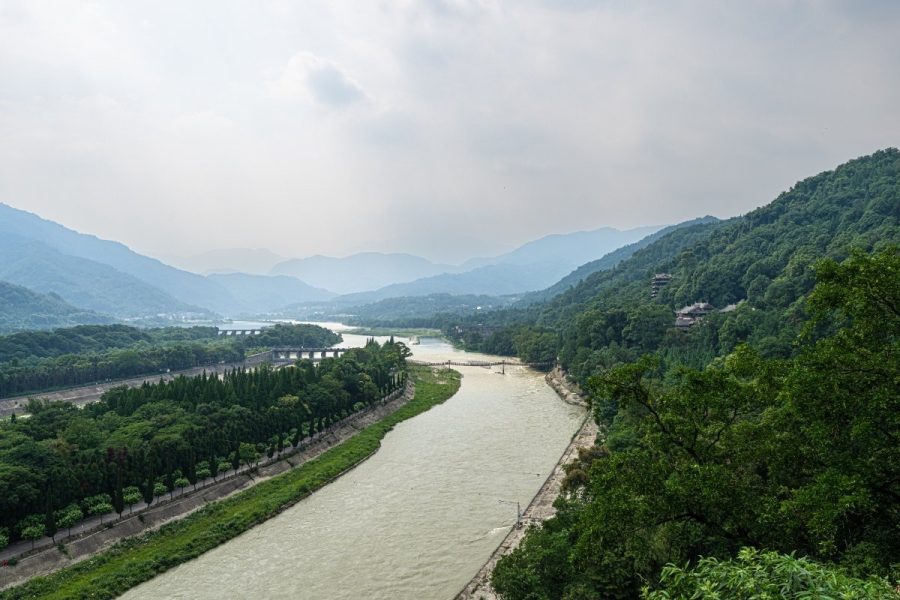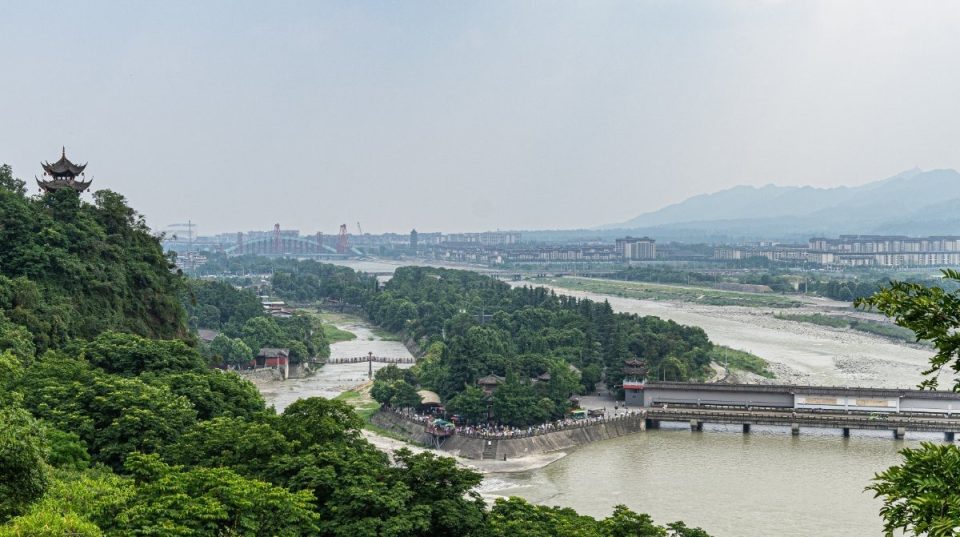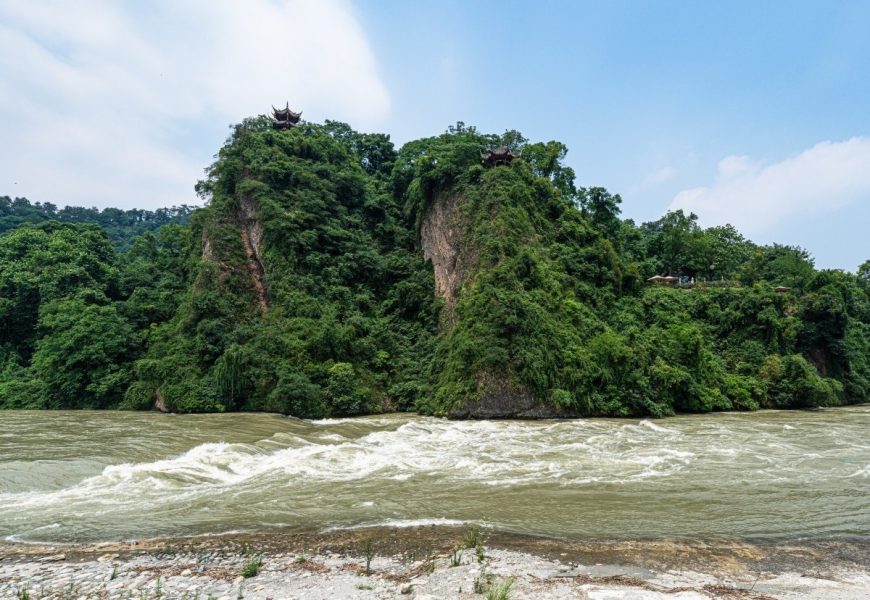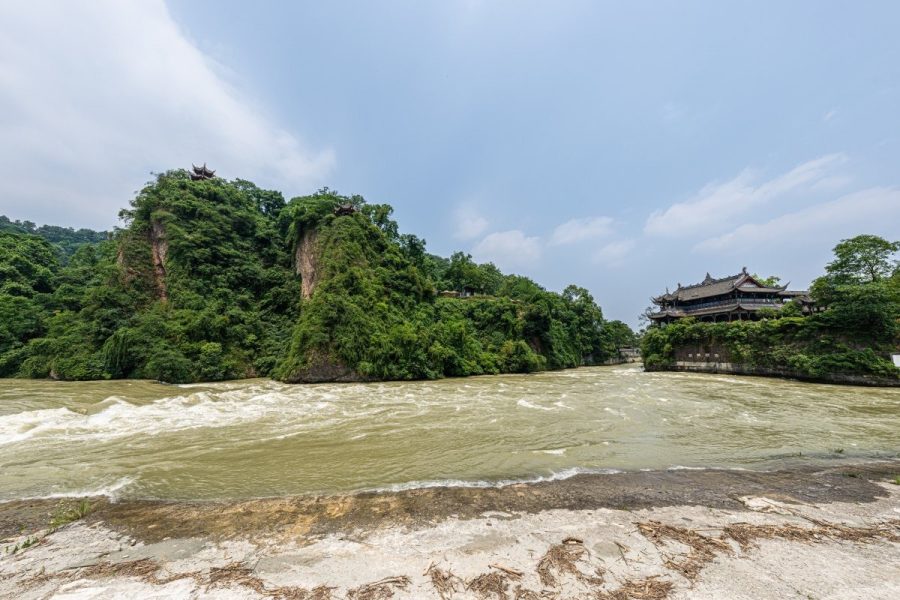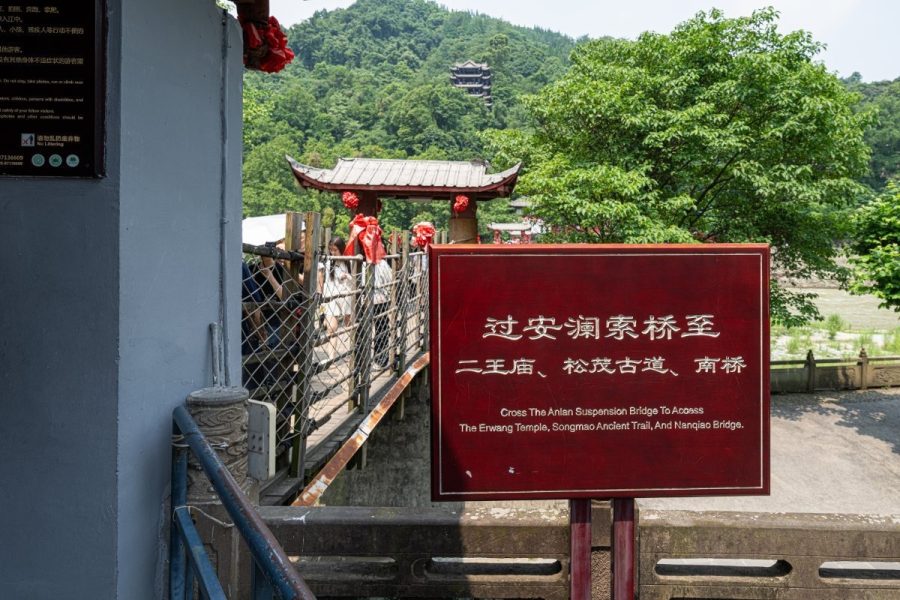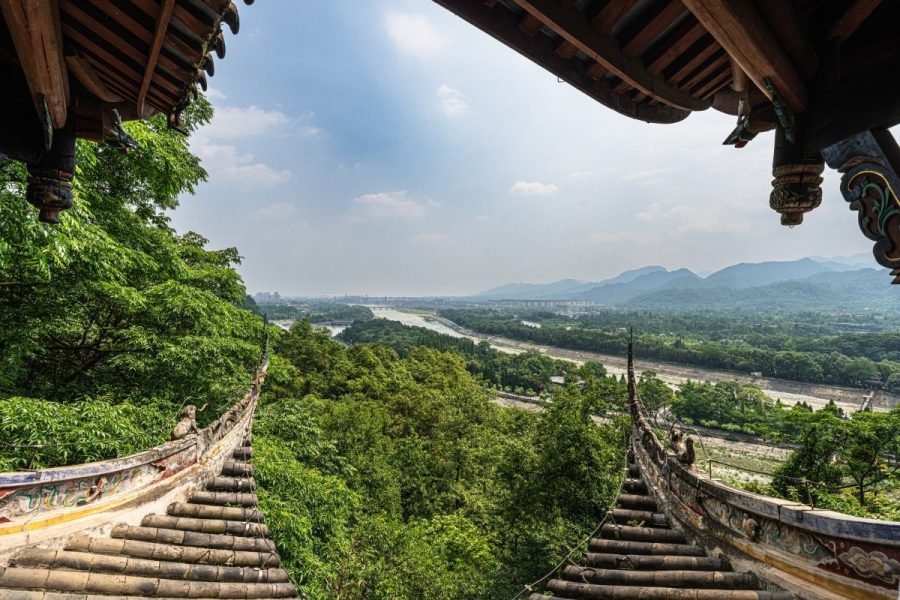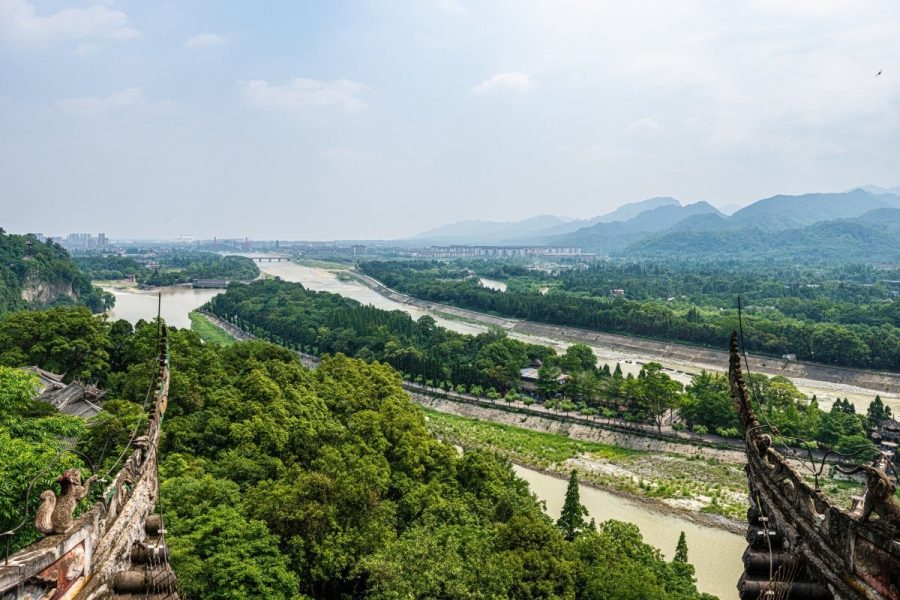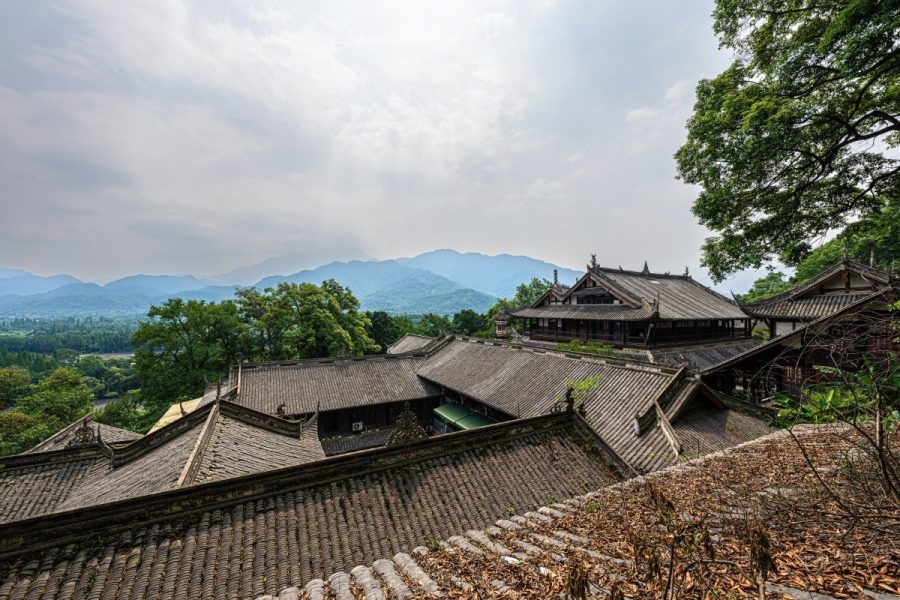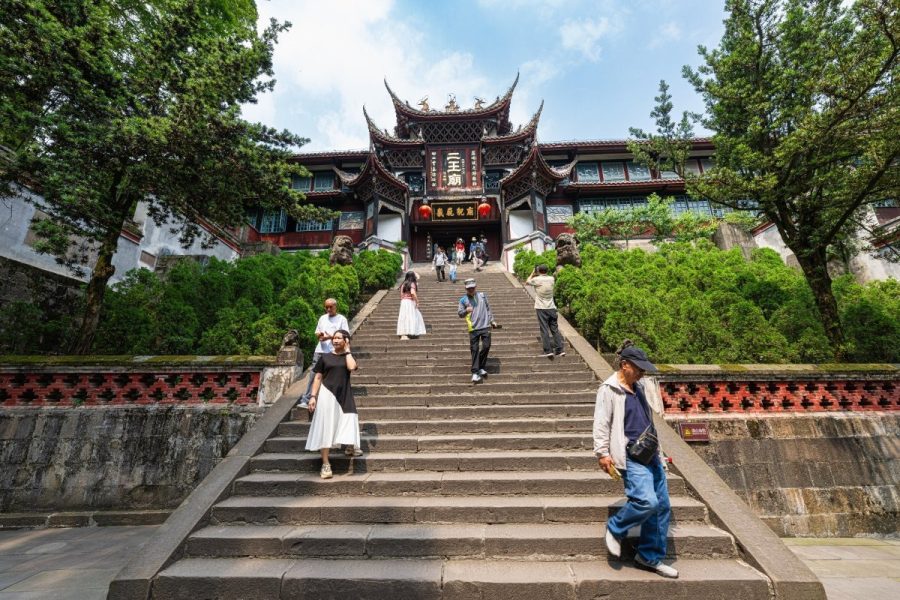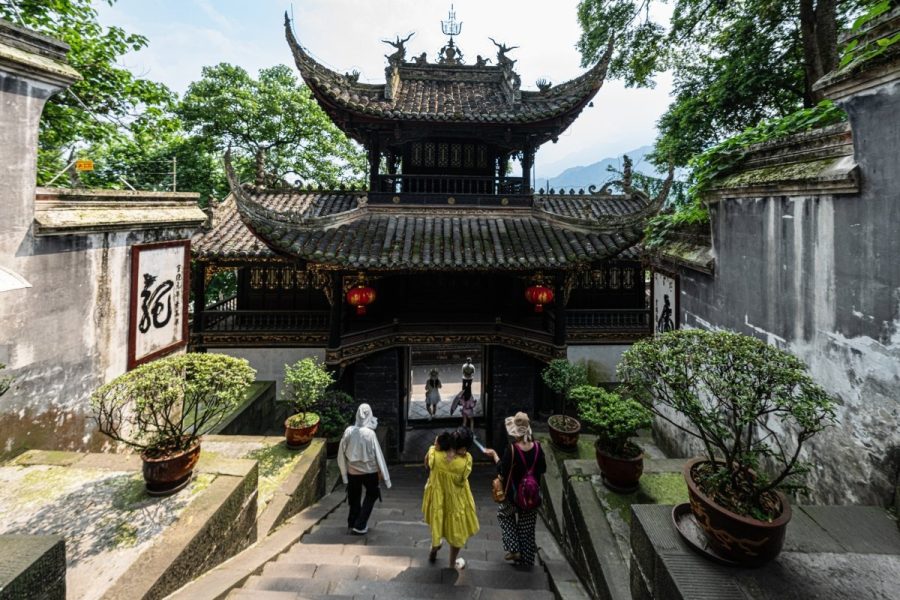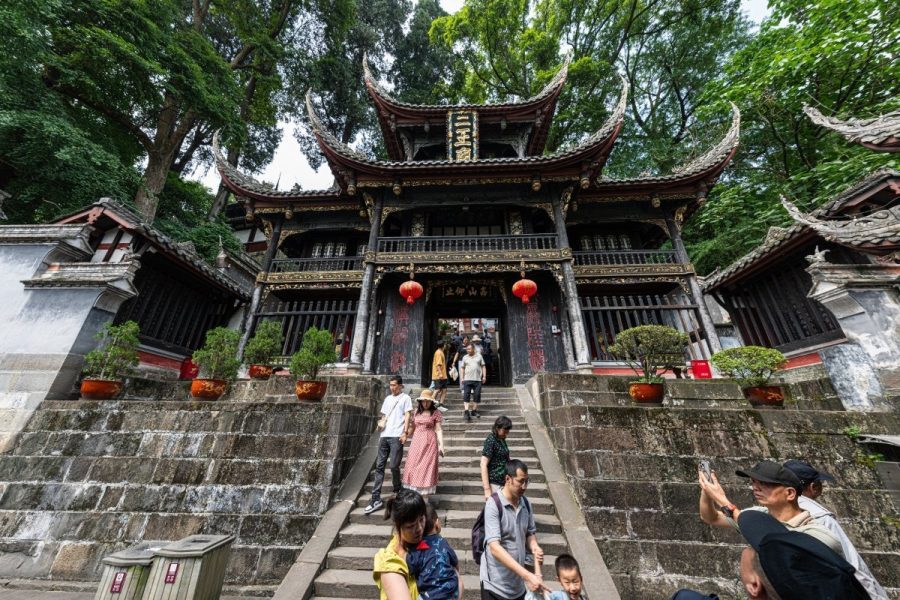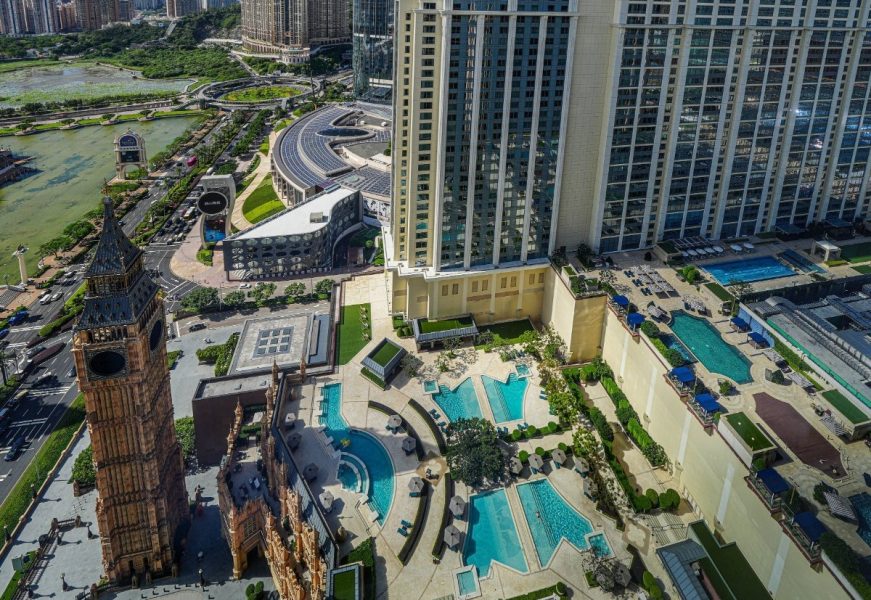June 27, 2025
A Chinese irrigation system – from 256BC and still going strong!
There’s plenty to see and do in and around Chengdu, so it’s not a bad option for long layovers. Apparently, visa-free transit extends to a whopping 240 hours – ten days! That’s enough for a vacation, never mind a stopover! In 10 days you’d of course see the pandas; however, it might not be enough time for a thorough exploration of Sichuan’s natural and historical treasures (for example, the turquoise lakes of Jiuzhaigou (the Valley of Nine Villages), and the Huanglong travertine cascades, etc.).
But if you fit in the pandas, but can’t stretch to the long-haul tourisms, you could, for example (if you’ve a weakness for impressive heavy engineering projects – like I have!) check out the Dujiangyan – the ancient irrigation-and-temple complex in Dujiangyan City…
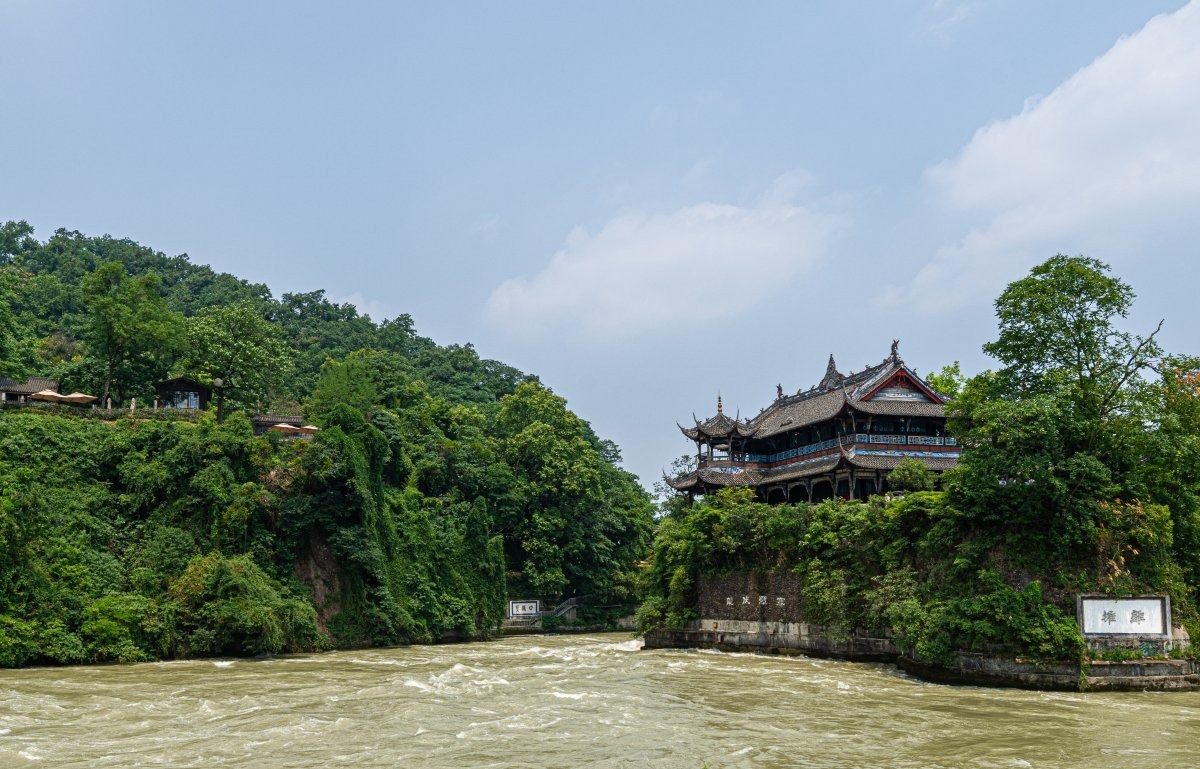
Here’s a brief history of the place…
The local Min River (a tributary of the Yangtze) used to flood periodically, deluging the fields and villages, which, as you can imagine, the locals and their governors didn’t appreciate. So, in… 256BC (!) (I checked this online) – they figured out a solution: they divided the river into several branches. This solved not only the flooding problem but also provided irrigation for the surrounding areas. The internet also tells me that, to build these diversion channels, they had to break up bedrock; however, since gunpowder and dynamite hadn’t been invented yet, they heated mountain rock with large bonfires and then doused them with water, so they cracked and became easier to handle! And in four years, they’d managed to build an irrigation system, and it’s still working to this day – 2,275 years later! About the only other things that come to mind worldwide that have lasted that long are, maybe, Roman roads and aqueducts…
At some point (I didn’t find out when), a Buddhist temple complex was built on the steep bank across from this hydraulic behemoth (I didn’t find out anything about it), and later the whole place evolved into a mass tourism magnet.
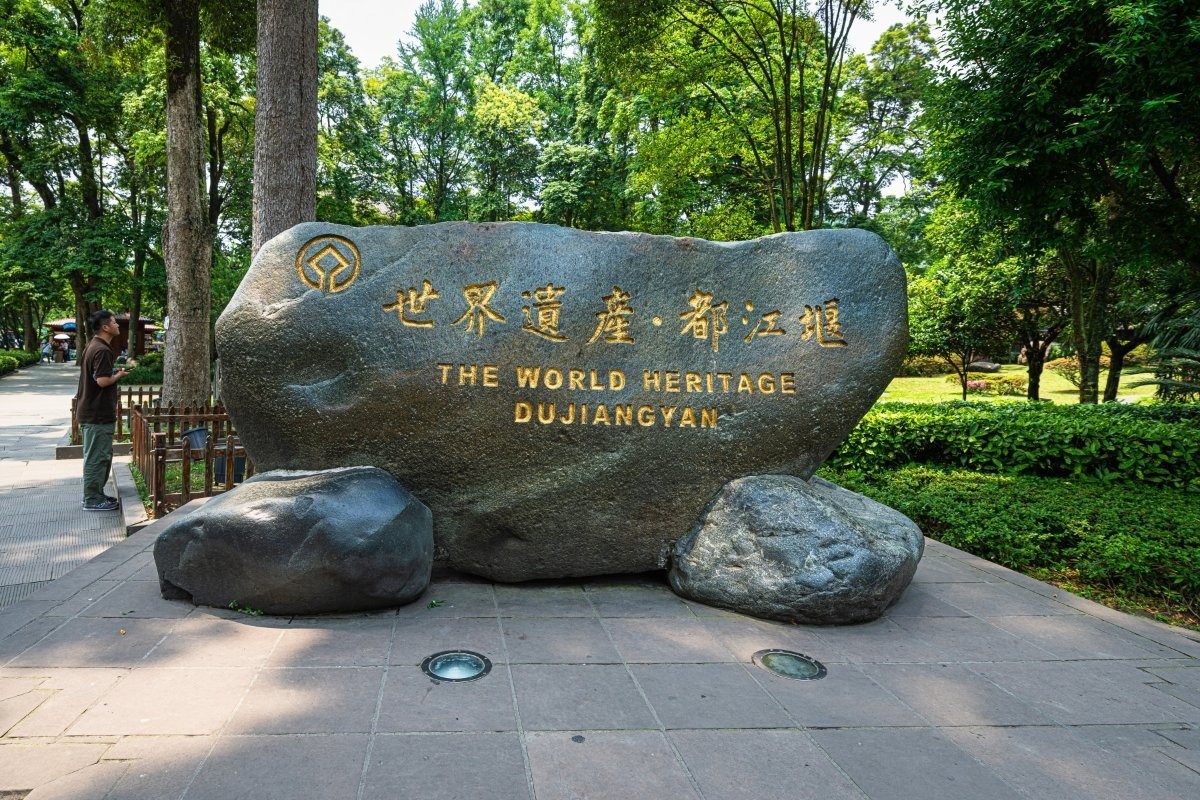
Yep, judging by the barriers ready for hours-long lines, tourism here is clearly normally massive, but – hooray! – no lines for us! Either it was the wrong day, or the weather was just too hot ->
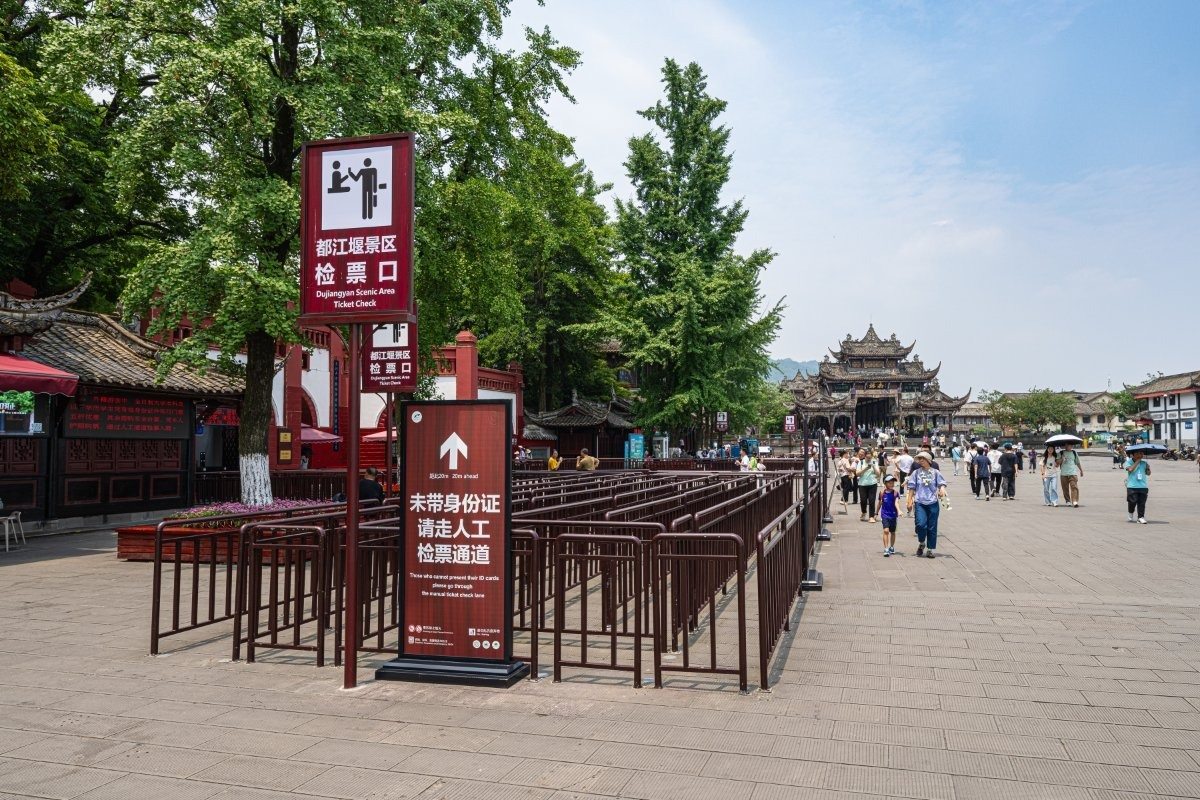
According to the map, rushing through everything takes around two hours – or three at a more steady pace. But if you go real slow, so as to be able to take in absolutely everything along the way, you could easily spend a day here.
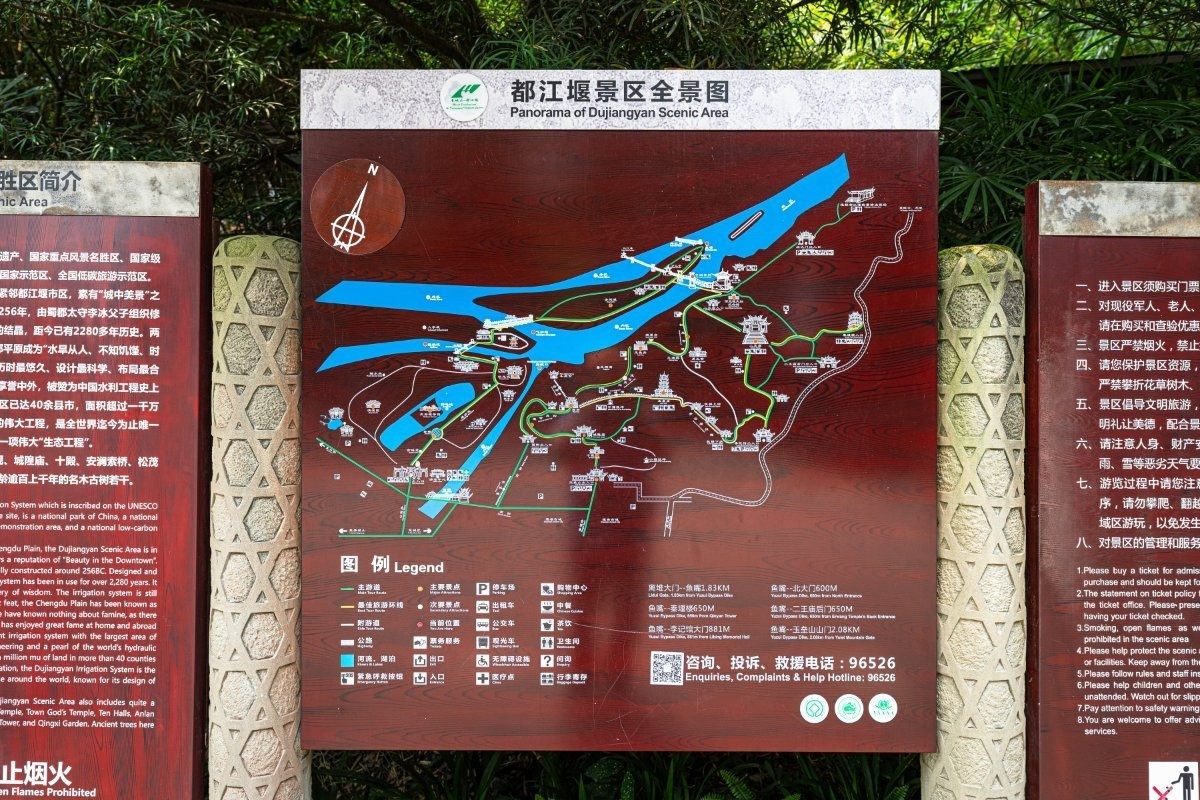
Ok. Let’s walk…
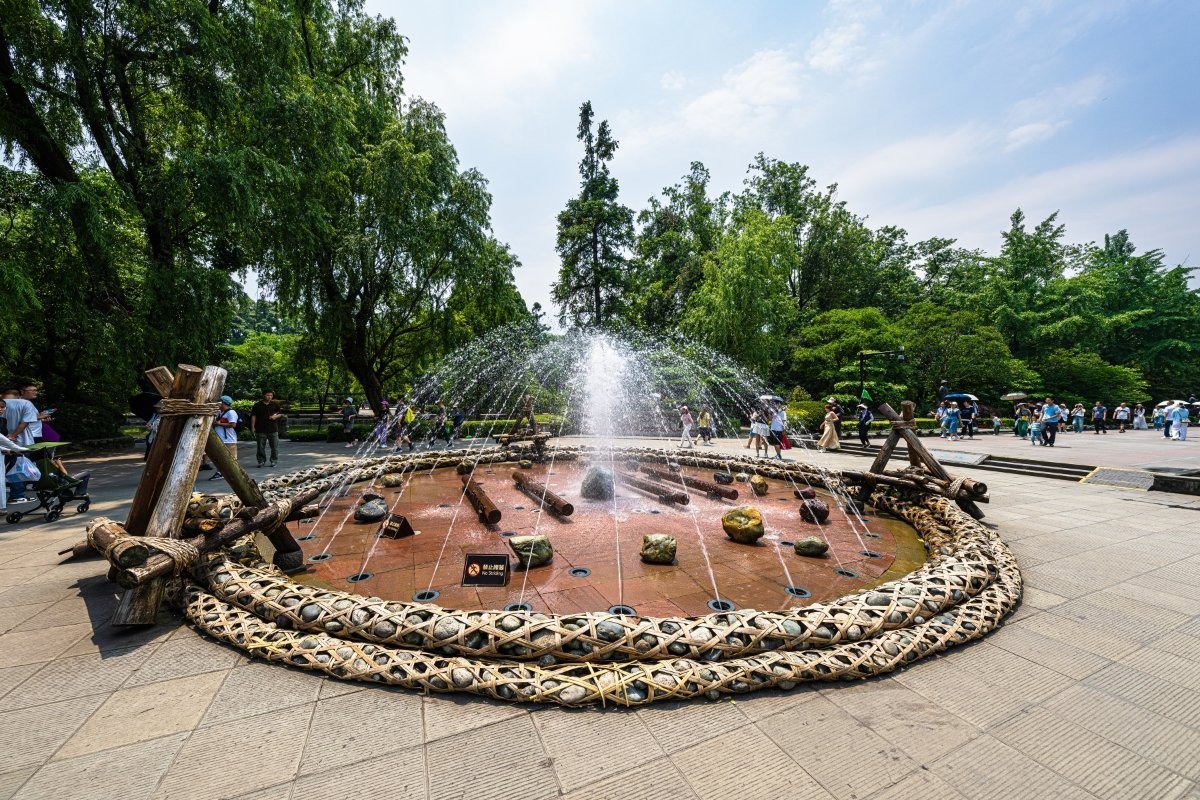
Here are the irrigation channels – built 2,275 years ago. Since it’s not the rainy season now, there was hardly any water:

Looking at sights like these, my inner rafter immediately woke up. How awesome would it be to raft down this! ->
It was really hot so we walked under the trees – not along the sun-scorched embankment ->
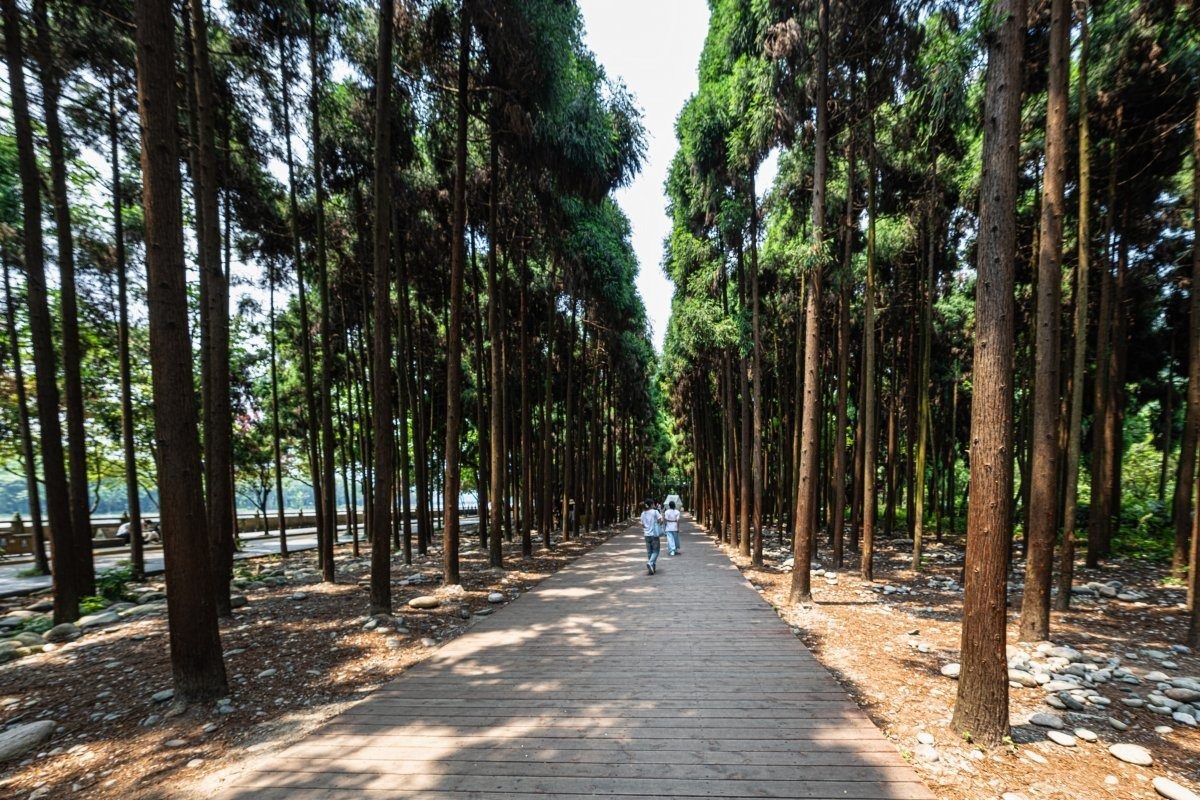
Time to cross to the other bank via this suspension bridge:
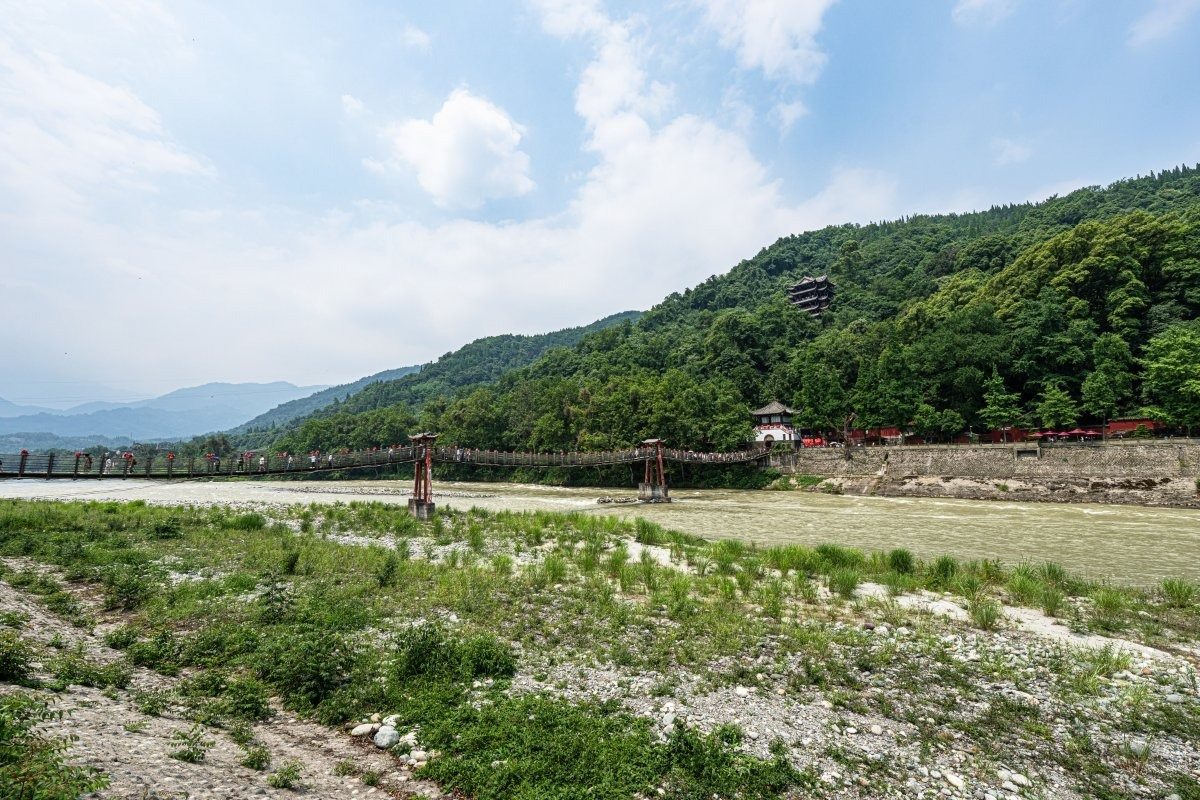
Here too they’ve got barriers for huge crowds ->
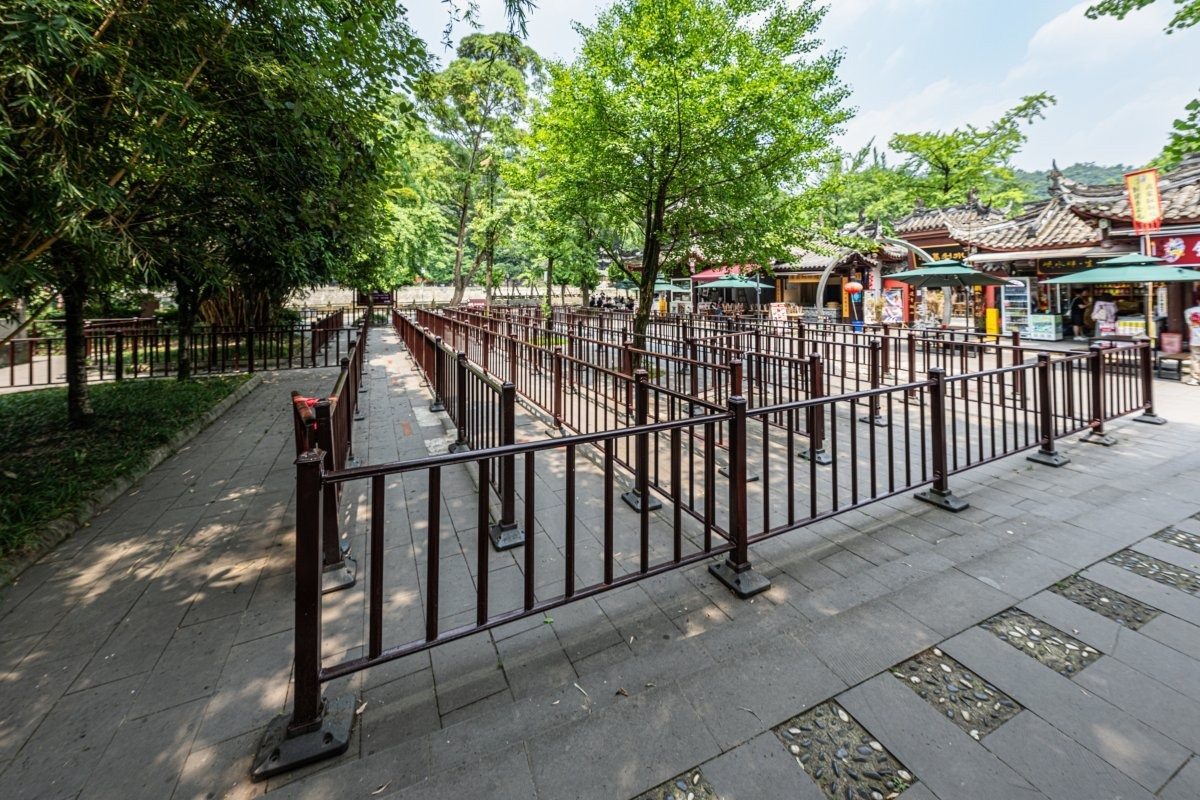
The bridge isn’t the sturdiest: it bounces up and down and sways side to side so much that some folks need to hold on to the handrails ->
Here we are on the other bank:
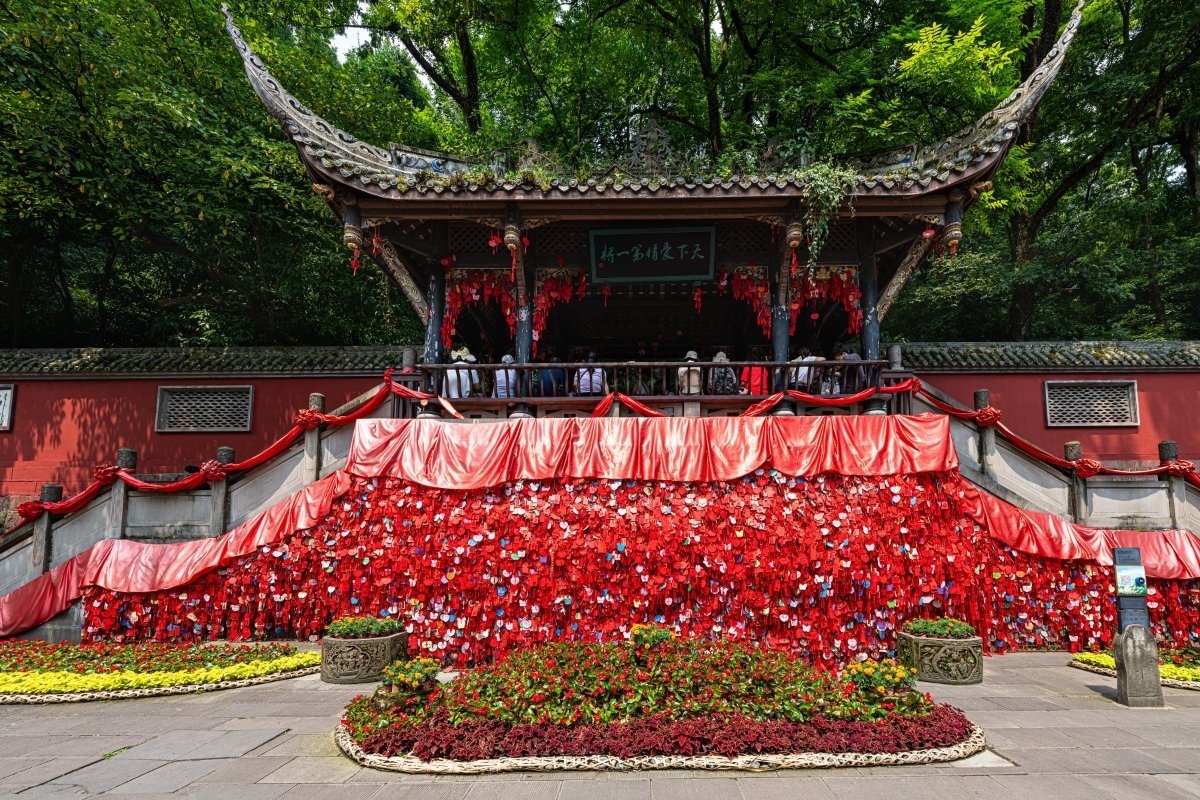
Then up some stairs and into pagodas and through Buddhist temples… – a labyrinth of buildings and directions. But you can regularly refresh yourself with all sorts of Chinese delicacies – all designed for this kind of weather (35°C). Hot? That’s an understatement. Especially if you’re not just lounging on the beach, but trudging up and down steps…
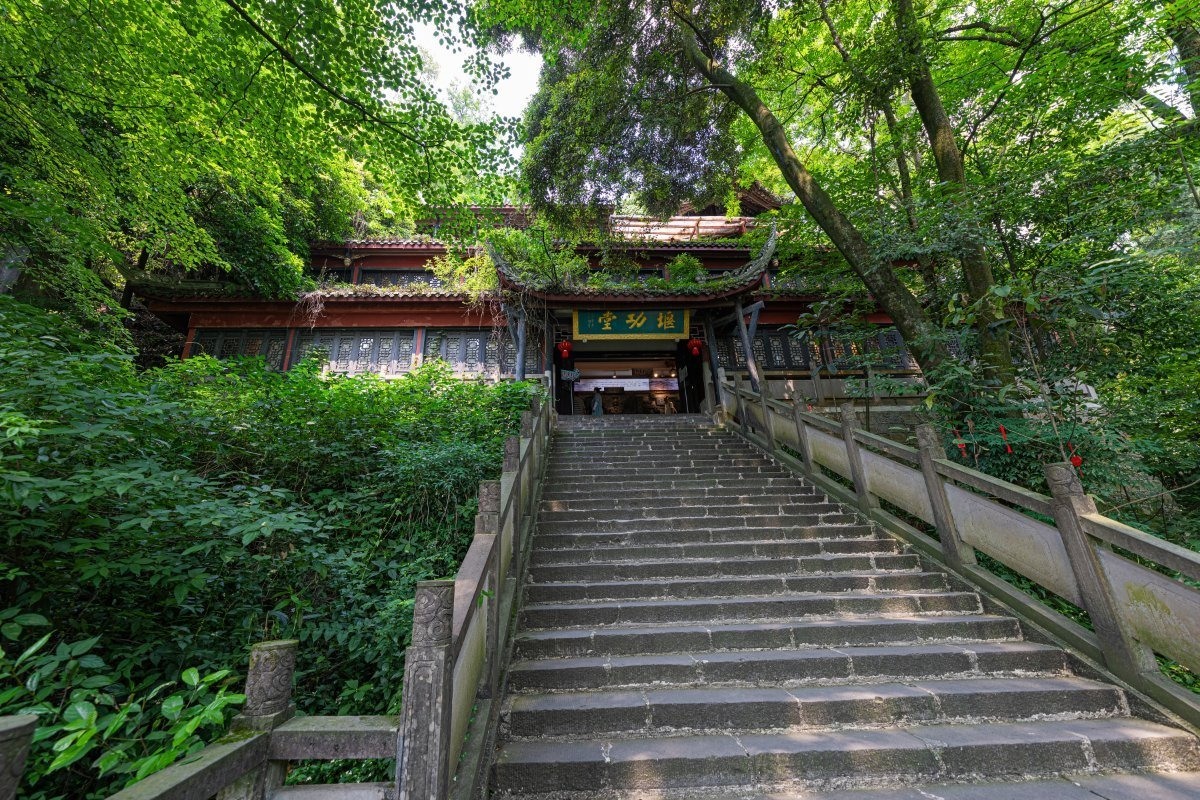
But at the top the views are pretty cool, and the breeze helps cool off an overheated body a little:
Oh. What’s that?? Actually – I’ve not a clue! ->

We keep wandering, looking around… perspiring:
That’s it. We finish the tourist loop and head back across the bridge to the bank we need.
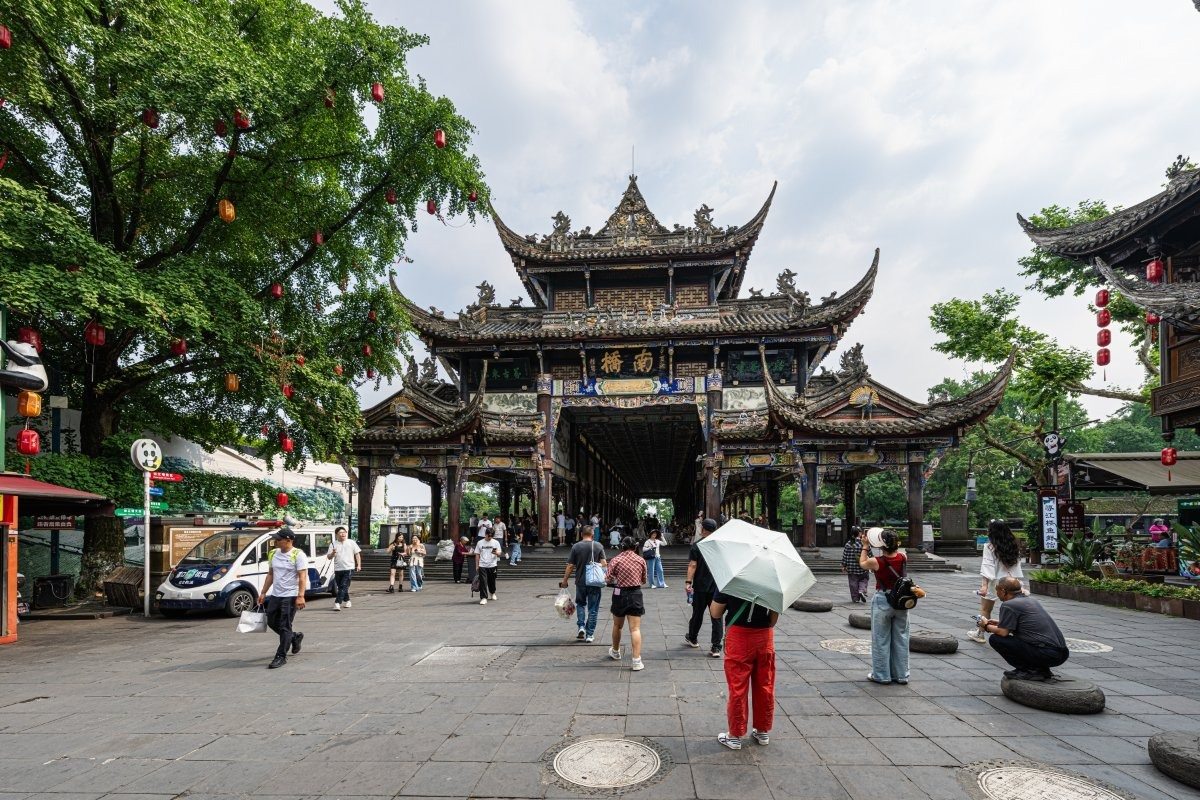
Looking at this low bridge, my inner rafter instantly loses enthusiasm and stops dreaming about the impossible ->
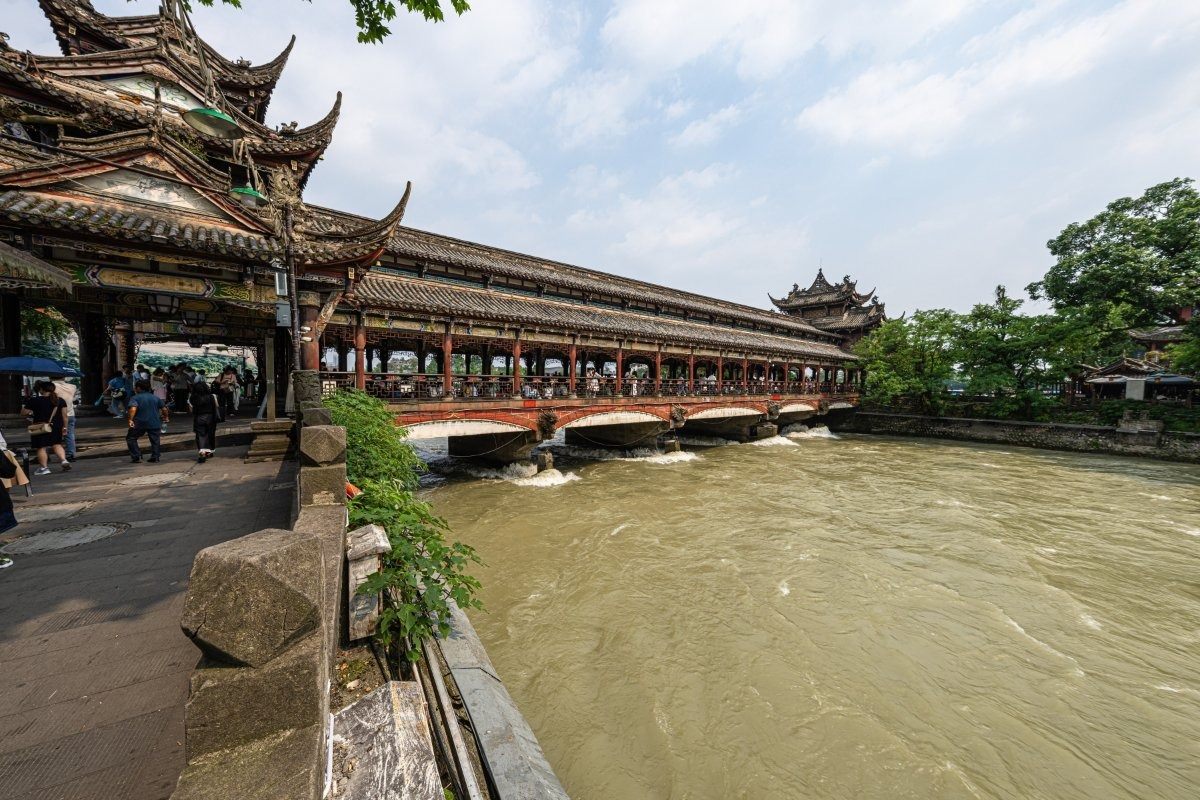
Tour – done. Nice. Recommended (but not in June!).
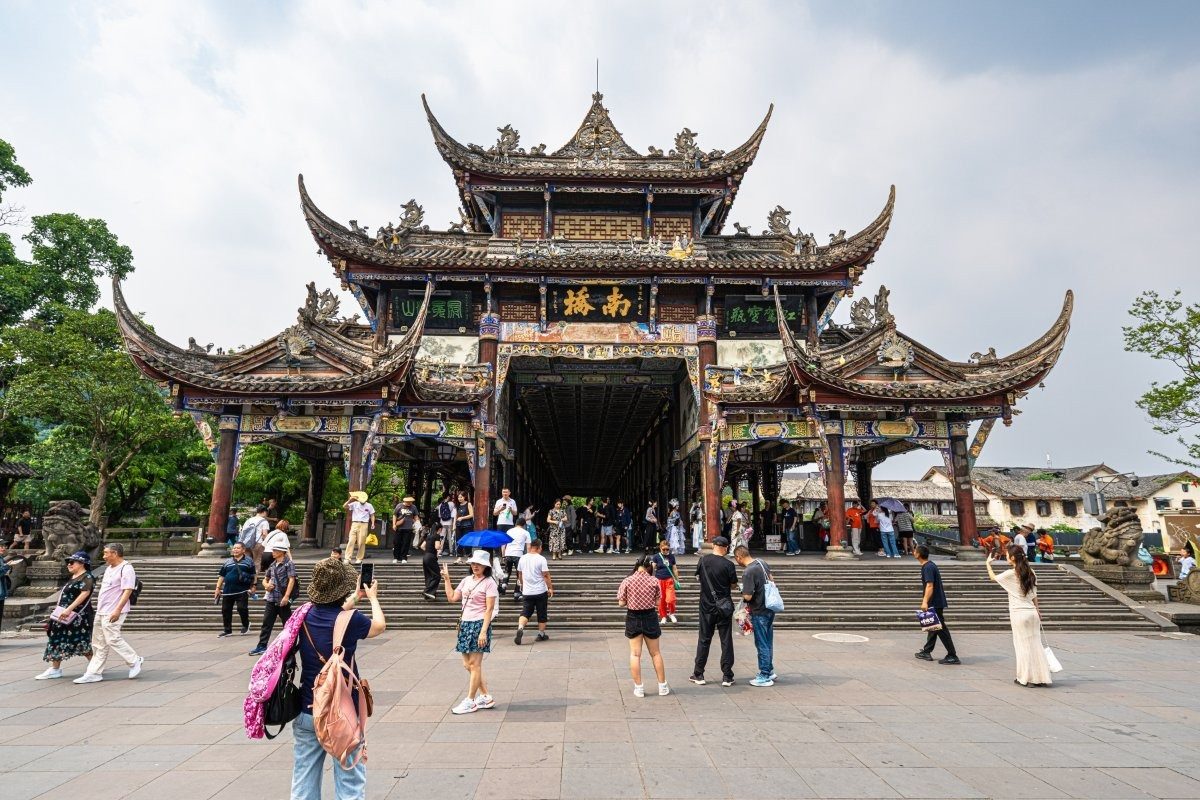
And as I write this, we’re already somewhere else entirely. Can you guess where? ->
